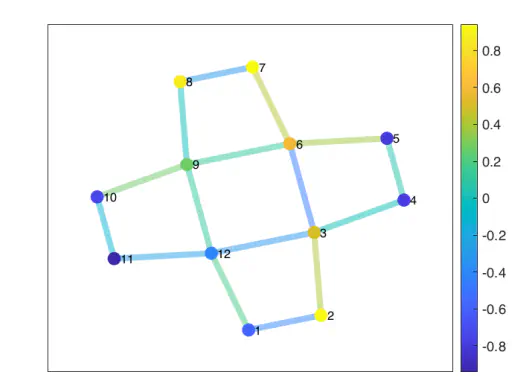Diffusion-driven instability of topological signals coupled by the Dirac operator

Abstract
The study of reaction-diffusion systems on networks is of paramount relevance for the understanding of nonlinear processes in systems where the topology is intrinsically discrete, such as the brain. Until now, reaction-diffusion systems have been studied only when species are defined on the nodes of a network. However, in a number of real systems including, e.g., the brain and the climate, dynamical variables are not only defined on nodes but also on links, faces, and higher-dimensional cells of simplicial or cell complexes, leading to topological signals. In this work, we study reaction-diffusion processes of topological signals coupled through the Dirac operator. The Dirac operator allows topological signals of different dimension to interact or cross-diffuse as it projects the topological signals defined on simplices or cells of a given dimension to simplices or cells of one dimension up or one dimension down. By focusing on the framework involving nodes and links, we establish the conditions for the emergence of Turing patterns and we show that the latter are never localized only on nodes or only on links of the network. Moreover, when the topological signals display a Turing pattern their projection does as well. We validate the theory hereby developed on a benchmark network model and on square lattices with periodic boundary conditions.